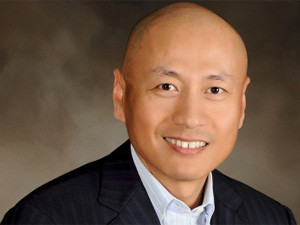
The future of networking looks very different to that which the ICT industry has employed and grown accustomed to.
So says Nan Chen, founding president of the Metro Ethernet Forum (MEF). Chen says there are two global networks known to man that have evolved throughout history and are ongoing due to their prolific use - the public switched telephone network (PSTN) and the Internet.
The third, he says, promises better performance and connectivity by bringing the quality of the traditional PSTN network to the Internet - Carrier Ethernet. The employment of this "third global network" is the vision of the MEF, an alliance that seeks to accelerate the worldwide adoption of carrier-class Ethernet networks and services.
Carrier Ethernet refers to extensions to Ethernet to enable telecommunications network providers to provide Ethernet services to customers and to use the technology in their networks.
"The possibility exists of a third network that combines the best of both worlds - PSTN and the Internet. Through its latest standards of carrier Ethernet, the MEF has taken the first steps to enable this third network."
The MEF's first generation of Carrier Ethernet (CE 1.0)-enabled standardised Ethernet services to be delivered over a single provider's network. Chen says the second generation, CE 2.0, is best defined by its ability to "deliver differentiated applications over interconnected, managed networks globally.
"In particular, the CE 2.0 Mobile Backhaul Implementation Agreement creates a standard for efficient and reliable 4G mobile backhaul networks and services, delivering significant backhaul savings for mobile operators and revenue opportunities for access providers."
Chen says this latest standard has three distinct characteristics - the first being multiple classes of service. "For the first time in this industry we can enable multiple services, deliver significant savings (through effective data delivery) and carry applications based on requirements."
The second, he says, is manageability. He says the new CE standard forms the foundation for on-demand, automated service provisioning, as well as management of cloud services and software defined networking.
"The third is interconnect - [CE 2.0] interconnects autonomous CE networks as a single regional or global network. It paves the way for integrated wire-line and wireless converged networks and services, available anywhere."
The applications of CE 2.0 extend to the retail and wholesale environment, mobile backhaul and cloud carrier services.
Mobile wave
The MEF says Carrier Ethernet is set to ride on the wave of mobile proliferation, spurred by "exponential demand" for mobile data. "To keep up, operators will need to adapt their mobile backhaul infrastructures rapidly in the next five years.
"Users may already own two or three devices - mobiles, smartphones, kindles, ultrabooks. This places a huge strain onto an already stretched mobile network. The move to cloud computing or on-demand IP - where users might want a few minutes of very high-speed connectivity once in a while - no longer matches a traditional telco business model geared to one or multi-year, fixed-bandwidth contracts," says Chen.
Carrier Ethernet, he says, has been touted as the most legitimate solution to these challenges.
Share